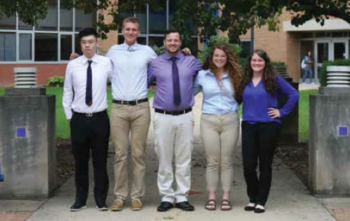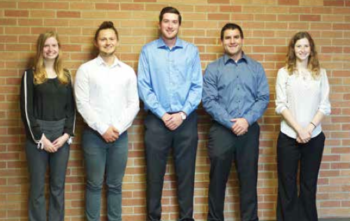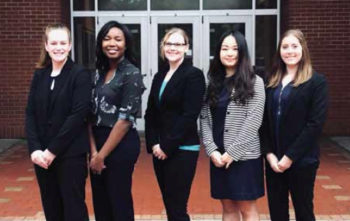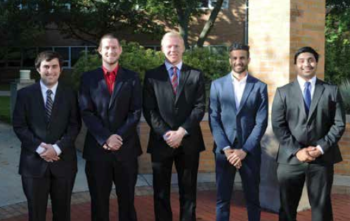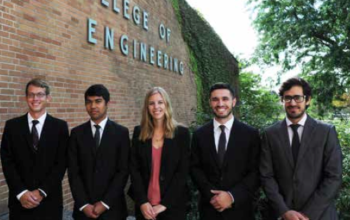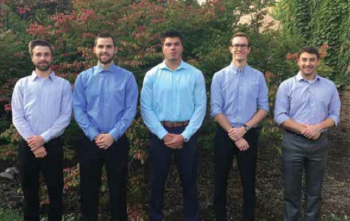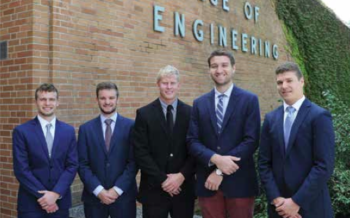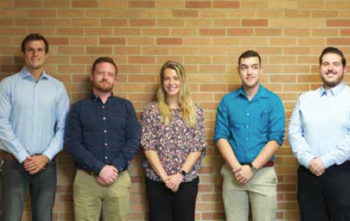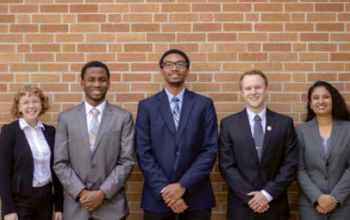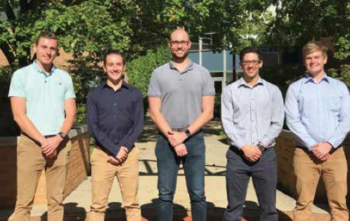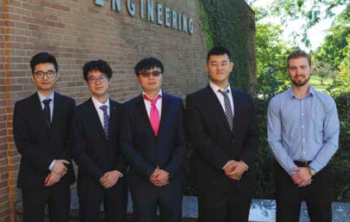Mechanical Engineering
Projects
One goal of the MSU Mechanical Engineering Program is to educate engineers who are prepared to lead, create, and innovate as their professional or graduate careers evolve. The Mechanical Engineering Design Program is the key element of the curriculum that supports this goal. There are five required design courses in the program which provide our students with eight hands-on, team-based, ‘design, test and build’ projects, and numerous opportunities to practice and refine their written, oral, poster, and video presentation skills. The Design Program in Mechanical Engineering has attracted national recognition on many occasions and helps to distinguish the ME program as one of the best in the country.
For information on becoming a project sponsor, please contact Jim Lang.
The following were the project sponsors and projects for Fall 2018:
Consumers Energy: Guidelines to Relocating Natural Gas Mains
Project sponsor Kate Barrera graduated from Michigan State University in December 2013 with a degree in Chemical Engineering and began work at Consumers Energy in January 2014. She is currently the System Engineer for Consumers Energy’s Howell and Livonia service territories.

Consumers Energy owns over 27,000 miles of underground pipelines used to transport and deliver natural gas to its customers. When groups such as MDOT or the City of East Lansing perform construction on public right-of-ways for purposes such as installing new sewers or rebuilding roads, they provide their construction plans to Consumers Energy. Consumers Energy then has to determine whether the construction work has the potential to interfere with their underground pipelines. If there is a conflict, then Consumers Energy must relocate the pipes at the company’s own cost. Sometimes there is an obvious conflict and pipes are promptly relocated. Other times, construction will occur over the pipelines, but there is no direct conflict. However, there is still the risk that various construction loadings from above will interfere with the pipes. For this capstone project, specific guidelines were written to help with Consumers Energy’s decision-making process in regards to relocating pipes due to various historical, environmental, and geographical factors. Concepts considered in these guidelines include the age and size of the pipe, the magnitude and type of construction loadings from above, the impact of corrosion on the pipes, as well as the properties and composition of the soil containing the pipes.
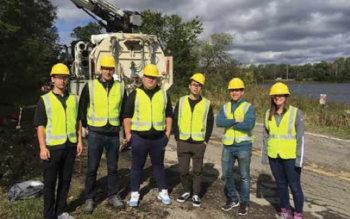
MSU Spartan Marching Band: Redesign Equipment Trailer
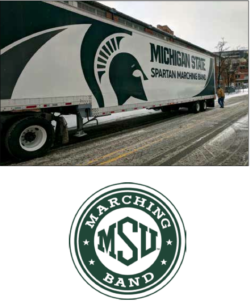
The Spartan Marching Band (SMB) is a musical ensemble that performs at Michigan State football games. The SMB was a group of 10 students when it was founded in 1870 and has grown to include over 300 members. They are best known for the Series march to stadium, the kick-step, and “spinning the ‘S’” during their pregame shows. They use silver instruments and special performance drums on game days. This equipment is transported around the country when the band performs at away football games, including Big Ten championships and bowl games.
Our team was asked to redesign the interior of the SMB’s trailer (pictured right) to use space more efficiently and reduce the time it takes to load and unload equipment. Before the project began, the trailer contained two major shelving units that held the majority of the instruments, but instruments had to be strapped individually in order to keep them from getting damaged during transportation. Miscellaneous equipment was kept in carts that were time- consuming to roll on and off the trailer. Our team focused on designing a system that would have people working on loading many things simultaneously to improve overall efficiency and allow the band to spend less time loading and unloading when traveling. We redesigned the shelving units so that instruments can fit more compactly and be loaded the same way every time. A side door has also been added to allow two points of access for loading and unloading.
Ingersoll Rand – Trane: Lifting Lug Redesign
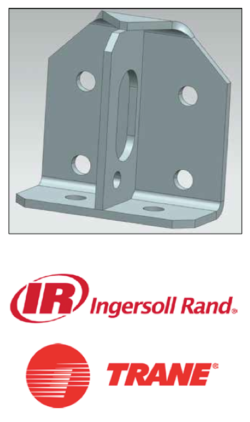
Trane, a subsidiary of Ingersoll Rand, provides residential and commercial comfort, connectivity, and energy efficiency solutions in the form of heating, ventilation, air conditioning (HVAC), and air quality systems. To ensure ease of transportation and installation, Trane builds these systems in modular sections and installs them onsite for the customer. Four lifting lugs are bolted onto each module in order to lift them off the ground into their desired locations. These lugs are typically left attached to the installed modules creating a manufacturing need of over 16,000 lugs each year.
Our design team has redesigned these lugs in order to reduce the benchmarked cost of $16 per unit. To achieve this, the team optimized the geometry and dimensions of the lug, while ensuring the required weight rating and factor of safety were upheld. Finite element analysis (FEA) was conducted utilizing both ANSYS and Altair Inspire software to test each iteration until an optimal design was found. These less expensive, optimized lugs allow Trane to save cost on every module’s installation and funnel more resources towards providing greater innovation and value to its customers.
National Superconducting Cyclotron Laboratory: Design of a Clover Detector Support Frame
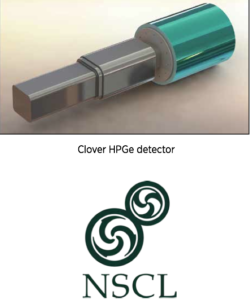
The National Superconducting Cyclotron Laboratory (NSCL), located at Michigan State University, is one of the world’s leading nuclear science research facilities. The scientific mission of the facility is the study of rare isotopes to learn how atomic nuclei are put together, how the elements are formed in the cosmos, whether we understand the fundamental forces at play in the universe today, and how to harness the developments at the laboratory for societal benefit. Rare isotopes are produced using the K500 and K1200 coupled cyclotrons and are provided to researchers from around the world at a variety of experimental end stations. The Facility for Rare Isotope Beams (FRIB) is a next-generation rare isotope facility slated for completion in 2022, which will be the only facility of its type in North America.
Our team was asked to design and detail a frame for an array of high purity germanium (HPGe) Clover detectors, for the decay spectroscopy program at the NSCL and eventually FRIB. The rhombicuboctahedron frame consists of eight triangular and eighteen square faces in a spherical configuration, allowing the detectors to be arranged around a target center symmetrically and with a high packing efficiency. This setup provides significant challenges in mounting and positioning the clover detectors to be adjustable in relation to the center point. Since the arrangement of the detectors varies with setup, the frame has to be flexible, while at the same time minimizing the mass of material near the detectors and maintaining structural integrity. The success of this project will improve the detection efficiency of the measurements allowing studies on more exotic nuclides than are currently possible.
Ingersoll Rand-Trane: Airflow Measurement System
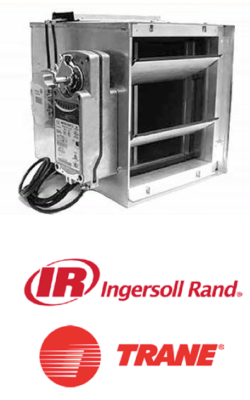
At Trane, it’s all about air! As a global a leader in air conditioning systems, solutions and services, controlling the comfort and cost of airflow in residential, commercial, and educational buildings is the primary objective. Trane offers a wide variety of efficient heating, ventilation, and air conditioning systems while integrating cutting edge environmental and efficiency technology across all of its products. Focusing on efficiency while incorporating cost-effective solutions into its systems has allowed Trane to excel in the marketplace. As an evolving company, finding new ways to monitor efficiency and reduce cost ranks is its utmost priority.
Our team has designed and fabricated a cost-efficient and ergonomically-sound airflow monitoring station that has been optimized to be mounted on a rectangular damper. The airflow station is used to measure the outdoor airflow for large-scale HVAC systems and was designed to satisfy the requirements dictated by ASHRAE 62, which is the worldwide standard used to calculate outside air requirements in commercial buildings. The team used a VCM control system in conjunction with static pressure inputs to measure the air velocity and accurately represent it as airflow out of the system. This newly designed damper allows Trane to continue to improve efficiency among their HVAC systems.
Hitachi Automotive Systems: Tabletop Wind Tunnel

Hitachi Automotive Systems is a Tier 1 supplier of world-class products to the global automotive market. Hitachi Automotive manufactures and markets engine management, electric powertrain, drive control, and car information systems for major automotive original equipment manufacturers (OEM) worldwide. Hitachi Automotive is currently developing control units for the automotive industry. These prototypes must have the ability to reject thermal energy from electronics to the ambient environment. Several factors affect the environment where the control units are located, and it would be beneficial to replicate these environments for performance testing of these prototypes.
Our team has been asked to design and document a durable, viable, and moderate cost tabletop wind tunnel that allows for the validation of prototype phase control unit designs. The validation of these controllers involves studying their ability to reject thermal energy from electronics to the ambient environment under the influence of several factors such as variable flow rates and heat conditions due to their under-the-hood application. The wind tunnel must therefore have the ability to output a wide range of volume flow rates and temperature differentials while maintaining the ability to avoid turbulent flow. The success of this device will allow Hitachi Automotive to perform a cost-efficient and thorough study of the performance of their control unit designs before full production.
MSU Recycling: Automated Waste Detection
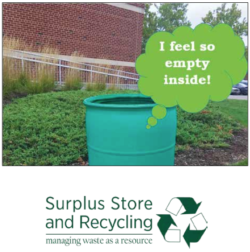
As the premier land-grant university in the country, it is no surprise that Michigan State University chose to take a proactive role in sustainability. In 1988, after students at MSU petitioned the Board of Trustees to focus on recycling, an administrative task force was formed to develop a comprehensive plan for waste reduction on campus. This initial task force eventually led to the creation of MSU Recycling, whose mission is “To manage MSU’s waste as a resource through an integrated system of reuse, recycling, collaboration, and education.”
Managing the waste of MSU’s campus is no small feat. MSU maintains 200 outdoor waste bins in regular service, and this number swells to 800 bins during the football season. Checking the status of the 200 bins is labor intensive and is performed twice a week by a 2-person service crew driving a route to each bin. Manual inspections show that 70% of the bins are less than 50% full and do not need emptying. These unnecessary stops result in increased labor costs, materials’ costs, and carbon emissions for MSU.
In collaboration with the ECE 480 team, our team developed an automated monitoring system to increase the efficiency of this waste management process. The result is a durable and weatherproof packaged sensor system that can be easily integrated into existing bins. The sensors detect the bin level and communicate with MSU Recycling’s existing software. This solution allows MSU Recycling to monitor bins remotely and plan waste collection routes accordingly.
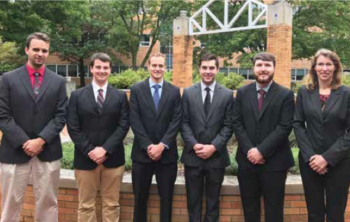
ArcelorMittal: Steel Coil Transfer Car
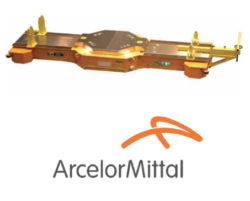
ArcelorMittal, a multinational steel manufacturing corporation headquartered in Luxembourg, is the world’s largest steel producer and mining company, producing 98.1 million tons of crude steel as of 2014. The company is a leading supplier in major North American markets including automotive, construction, appliance, and machinery. In the United States, ArcelorMittal employs more than 18,000 people at 27 operations. More than 95% of the company’s raw steel production is from flat operations, which are primarily integrated facilities. All products are available in standard carbon grades as well as high strength, low alloy grades for more demanding applications.
Our team focused on designing and developing an automated guided vehicle (AGV) that carries a 50,000-pound steel coil from the loading docks to the shipping hall. The AGV also eliminated the need for a full-time forklift operator and allowed for the transportation of more than one steel coil at a time. Various safety features were considered since the AGV does not have operators. The weight capacities of the wheels and the floor introduced important design constraints. The design included mechanisms for holding the coil in place on the AGV in order to initiate the movement of the AGV and a track for the AGV so that there is a path for the AGV to follow.
BorgWarner: Active P0 FEAD Tensioning System
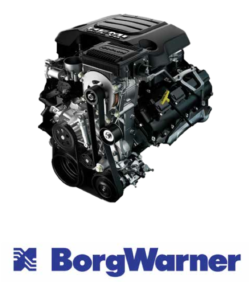
BorgWarner is an international Tier I automotive supplier headquartered in Auburn Hills, Michigan. This metro-Detroit based company has over 29,000 employees worldwide and posted roughly $9.8 billion in sales in 2017. By focusing on innovative and consistently reliable products, BorgWarner has earned their spot as a go-to supplier for innovative powertrain technologies. These technologies range in products suitable for light vehicles, off-highway, aftermarket, and medium to heavy vehicles. BorgWarner is looking towards the future by increasing their portfolio of mild hybrid technologies in order to be ahead of the curve when it comes to supplying environmentally friendly automotive components.
The purpose of this project is to add to BorgWarner’s product portfolio by initiating the design of an active belt tensioner for a P0 mild hybrid vehicle. The team began the project by performing a deep dive into competitive devices by analyzing active tensioner patents and researching competitor product portfolios. By performing this research, the team gained a baseline understanding of the obtainable fuel economy benefits as well as performance and efficiency gains for the proposed active tensioner design. With this knowledge, the team used the computer aided engineering software GT-SUITE to perform a benefits analysis and layout optimization of a P0 mild hybrid front-end accessory drive system with an active tensioner.
Fraunhofer, USA: Cyclic Impact Tester for PVD Thin Film Coating Evaluation

Fraunhofer USA, Inc. operates as a not-for-profit organization with the mission of advancing applied research. This mission is made manifest by Fraunhofer USA’s continual efforts to nurture new technologies and methods for implementation in the industrial sector. Fraunhofer USA’s work serves the global industrial market by introducing new and viable solutions, such as thin film coatings. The German based company operates one of its facilities on the Michigan State University campus and collaborates with university faculty.
Our team has been asked to design and build a device to provide impact testing on the Fraunhofer USA’s thin film coating samples. The device will need to meet the requirements imposed by the company. Such requirements include highly adjustable impulse, frequency, and angle of impact. Thin, hard coatings are susceptible to damage during impact events, where the hard coating may crack or chip. Fraunhofer USA was interested in simulating the impacts seen by their coatings in an industrial application. Our device will assist them in exploring surface degradation morphologies during operation. Fraunhofer USA’s coating staff will be able to research the impact loads and cycle quantities that best represent the damage produced for various use cases. The gathered data will allow the company to benchmark its coatings and further develop their impact resistance.
Eaton Corporation: Torque Limiter Test Fixture
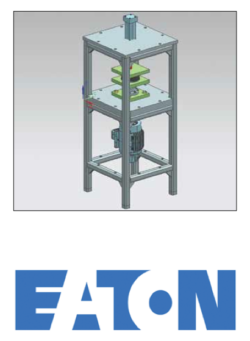
Eaton Corporation is a power management company that provides energy-efficient solutions to help its worldwide customers manage electrical, hydraulic, and mechanical power more efficiently, safely, and sustainably. The location in Grand Rapids, Michigan is one of the sites that encompasses Eaton’s Aerospace group. It specializes in manufacturing controllers and smart actuation systems for military and commercial jet customers. Eaton’s technology of linear and rotational actuators utilizes single or multi-plate skewed roller friction subassembly as part of torque and force limiting devices. This technology safely prevents output forces and torques from causing catastrophic damage to the actuator or aircraft structure by prohibiting unwarranted motion from occurring.
The goal of this project is based on working from a previous 2015 MSU capstone team. Our objective is to manufacture the testing fixture and develop a guideline for Eaton’s torque limiting bearing. This will result in the ability of Eaton to provide lower cost and lower weight design solutions to its customers. To successfully conduct baseline testing of existing torque limiting components, the team procured and manufactured the torque limiter test fixture using and validating the previous capstone design. Once fabricated, the testing fixture will be used to test torque limiting bearings and collect a survey of data for lubrication, material, and geometric parameters. After collecting the design data and comparing it with the baseline model, the team and Eaton determined the optimal design parameters for the torque limiting skewed roller bearing.
NASA/Arizona State University: Neutral Flux Probe

Psyche is the name of a metal-rich asteroid orbiting the sun between Mars and Jupiter. It is also the name of the NASA mission, led by Arizona State University, to visit this asteroid. The spacecraft will launch in 2022 and will utilize solar-electric Hall Effect Thrusters (HETs) in order to reach the asteroid in 2026. A HET is a type of ion thruster that accelerates propellant with electrons in an electric field, then neutralizes these ions as they exit the thruster. These HETs are tested in large vacuum facilities to simulate the conditions in space, which are those of near-vacuum pressure and very low temperature, as the HETs are very sensitive to small changes in pressure. However, a problem arises when residual propellant from these thrusters remains in the vacuum chamber and has a deleterious effect on those same thrusters. The residual propellant leads to a decrease in the efficiency in the thrusters.
Our team is comprised of five mechanical engineers and three electrical engineers. The goal was to design a probe capable of measuring the flux of neutrals inside vacuum test facilities. Neutrals are the particles with no charge that exit in the plume of the thruster. The device developed utilizes tried and tested methods implemented in a unique way in order to better understand the quantity and direction that these residual particles follow as they leave the thruster.
General Motors: Active Force Feedback Device

In the increasingly dynamic automotive industry, General Motors, an American Original Equipment Manufacturer (OEM), must lead the industry in advanced technology development to outsell competitors. In the mission of manufacturing autonomous, electric vehicles with ‘by-wire’ capabilities, General Motors is giving engineers the task of designing and analyzing equipment that has never been used on cars before. General Motors is a partner with Michigan State University, and once a year the company supports a design project that will significantly contribute to the company’s success. The Active Force Feedback Device is this year’s project.
General Motors has given our team the task of designing a prototype of a device that can actively change its force output. It will have many applications to autonomous, electric vehicles, including suspension, braking, thrust, and more systems to actively adjust force feedback between the driver, vehicle, and road. Our team designed a controls prototype in Simulink with electromechanical hardware to model the device’s response to specified force input functions. The device can add or subtract force functions from its existing state to alter the feedback. The design adheres to the National Highway and Traffic Safety Administration’s requirement of detecting a failed operational condition. Upon detection of a failure, the device will alter the force output to alert the driver that the vehicle must be serviced. Additionally, the team utilized CAD and CAE tools to model a 3D prototype capable of withstanding specified load cases and temperature ranges.
Michigan AgrAbility: Beehive Lifter Axle
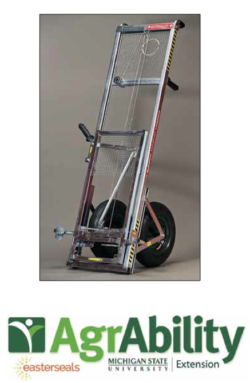
AgrAbility was started in 1990 as a result of the Farm Bill and has since been providing services to agricultural workers with disabilities and various backgrounds. Its vision is to enhance the quality of life for farmers, ranchers, and other agricultural workers with disabilities. It addresses various disabilities like spinal cord injuries, amputations, arthritis, back impairments, and behavioral health issues. AgrAbility prioritizes its mission to provide direct services to agricultural workers through individual consultations. Its goal is to work alongside and assist its clients in succeeding in rural areas in America.
The current project is to assist an army veteran and MSU entomology professor named Adam Ingrao. He is a local bee farmer who sustained a back injury during the line of duty. AgrAbility provided Adam with a device called the KaptarLift, which is designed to be a multi-functional dolly. It allows the user to clamp, lift, tilt, and carry beehive boxes up to a maximum load capacity of 300 pounds. The problem that Adam has with the KaptarLift is that it tends to tilt side-to-side due to its narrow wheel base when it rolls along uneven surfaces. Since Adam uses this device primarily in a field, the terrain is anything but smooth. Therefore, the challenge presented to the team was to design an improved lifter axle to prevent the device from tipping over due to the increased movement caused by uneven surfaces and the 300-pound load relative to the axis of rotation at the wheel base.
Heartwood School, Ingham ISD: Mobile Mulit-Functional Therapy Station
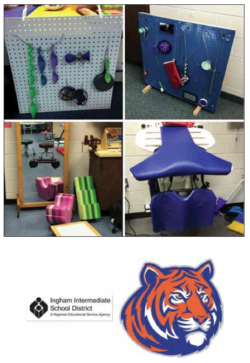
Heartwood School is a school in Ingham County for special needs students with moderate to severe cognitive and physical impairments. Heartwood is also a MOVE (Mobility Operations via Education/ Experience) model site. The MOVE program allows these students to learn and practice various mobility skills including sitting, standing, and walking, by making the activities fun and engaging. The school was using many different, separated pieces of equipment to develop each of the motor skills individually. Heartwood was seeking a safe, mobile, and user-friendly device that combined sensory items with mobility assistance features to create an all-in-one station to develop multiple skills.
Our team designed, built, and validated a multi- functional therapy station for the younger students. The final product is a durable, sturdy, and safe structure that promotes practice with mobility skills such as reaching, grasping, sitting, and standing. The design incorporates several activities to motivate the students to move and work on therapy goals while providing a compact unit that increases the efficiency and safety of the user. Additional features added, such as knee supports, elbow supports, and grab bars, allow students of varying ability to benefit from the therapy station with minimal assistance from a teacher or therapist. The success of this project will have a significant impact on the quality of life of these students by allowing them to learn and participate in mobility activities.
MSU Adaptive Sports & Recreation Club: Symmetrical Arm Function Sports Wheelchair
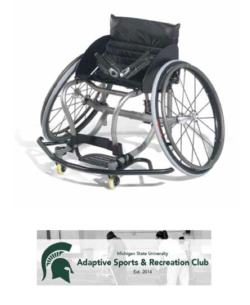
The MSU Adaptive Sports & Recreation Club was founded in 2014 as a registered student organization. The goal of this organization is to create an atmosphere that provides social and physical opportunities for athletes with physical disabilities. To foster such an atmosphere, the athletes and several able-bodied volunteers meet to play a variety of sports such as floor hockey, tennis, ping-pong, and basketball. Through the use of sports, the club not only aims to improve the physical health of its athletes but hopes to eliminate societal stereotypes about disabilities as well. Since physical needs vary from athlete to athlete, some specialized adaptive sports equipment is used during activities. Even with these available, however, some athletes are still unable to reach their full potential due to equipment not being specialized enough.
Due to this lack of specialized equipment for the club, our team was asked to improve upon the design of a sports wheelchair for users with asymmetrical arm function. This wheelchair will be used by individuals with disabilities that primarily impact their fine motor skills and range of motion in their upper limbs. Design changes were implemented to allow the user to move in the direction they desire while still keeping their dominant arm free, allowing them to fully participate in whatever sport they are playing. The asymmetrical arm function sports wheelchair was designed and built with functionality, safety, and comfort in mind. With this redesigned wheelchair, the MSU Adaptive Sports & Recreation Club will be able to allow participation for a wider variety of athletes.
Environmental Protection Agency (EPA): On-Demand Server Tower Cooling
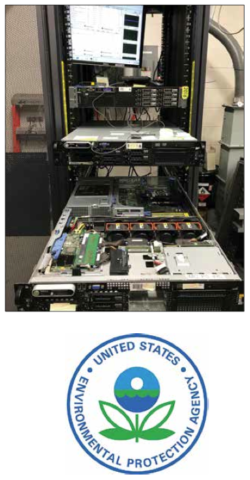
The U.S. Environmental Protection Agency was established in 1970 by the federal government to carry out the mission of protecting human health and the environment. Under this agency, the Office of Transportation and Air Quality (OTAQ) was created, as well as the National Vehicle and Fuel Emissions Laboratory in Ann Arbor, Michigan. The Responsibilities of this state-of-the-art facility include certifying that all vehicles and engines on the road in the U.S. meet federal emissions and fuel economy standards; testing Engines for in-use compliance; analyzing fuels, fuel additives, and exhaust compounds; and researching and developing new technology to reduce vehicle emissions and increase fuel efficiency.
In the event of a disruption in electrical service to the facility, the computer servers that house the above data would be protected by a backup power system, but the room’s HVAC system wouldn’t. Without active temperature control under such conditions, the servers may exceed ASHRAE operating temperature guidelines, necessitating protective measures to transfer the server operations to different locations to maintain data integrity. The mission of the project is to design an on-demand cooling system for the server racks that monitor temperatures to sense an impending overheating of the servers and activate during an unscheduled power disruption. Our group has designed a low-cost prototype that will analyze the internal temperature of the server towers in real-time and activate an independently powered cooling system that is used until power and environmental control to the server area has been restored.
Whirlpool Corporation: Water Delivery for Self-Cleaning Dryer

Whirlpool Corporation, headquartered in St. Joseph, Michigan, designs and manufactures home, kitchen, and laundry appliances. In order to produce a continually improving line of appliances, Whirlpool has been developing technologies that create ease of maintenance for their customers. In European countries, Whirlpool sells a line of dryers utilizing a heat pump to condense moisture from the drying cycle. At the end of the cycle, a portion of the water collected is then directed through a diverter valve to clean the final lint screen in the system. When the final lint screens are not being cleaned, the water collected goes to a water collection bottle. Whirlpool has found that the diverter has a small amount of bypass water when it should be directed to the bottle.
Our team was asked to evaluate possible redesigns of a water delivery system that could be built to withstand lint debris over the product life. The goal of the new design is to eliminate the bypass while increasing cycle efficiency and maintaining design robustness. This feature gives the consumer a product with less maintenance, while being highly energy efficient.
Ford Motor Company: High Pressure Calibration Gas Cylinder Filling Station
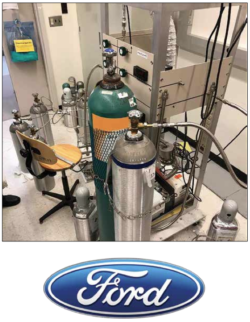
Ford Motor Company is an American multinational automaker headquartered in Dearborn, Michigan. It was founded by Henry Ford and incorporated on June 16, 1903. Ford focuses heavily on regulating automobile emissions and invests a lot of resources each year to increase the fuel economy of its automotive products. According to Ford, 99.9% of the carbon in fuel ends up as CO2, indicating that the measured amount of CO2 present is an accurate representation of fuel consumption or fuel economy. It is important that these measurements are recorded accurately in order to provide reliable results. Therefore, properly calibrated reference materials that are easily accessible are an important asset to Ford Motor Company.
Our team has been tasked with designing the gas filling station, which will be used to transfer the reference gases from large cylinders to smaller cylinders safely, quickly, and free from any contamination. After the testing and calibration processes, the newly designed filling station will be able to transfer the reference gas from a large cylinder to a smaller cylinder that can be easily transported. The success of this project is based on the ability to deliver the samples worldwide as reliable Standard Reference Materials (SRMs), enabling industry proficiency programs to maintain a strong correlation between OEMs and regulators.
Kautex Textron: Enhancing Predictive Capacity in CAE Testing
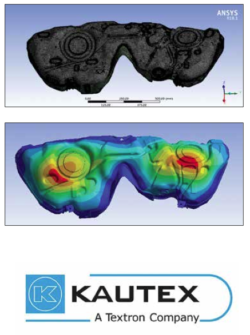
Kautex Textron is a Tier One supplier to global OEMs. Kautex designs and manufactures fuel systems, selective catalytic reduction systems (SCR), castings, and camera/sensor cleaning systems. With 32 facilities in 14 different countries, as well as over 6000 employees, Kautex has quickly grown to become one of the 100 largest automotive suppliers in the world in terms of sales volume. While ensuring safety and reliability, Kautex has always strived to maintain the “first to market” trend with regards to its products and innovation. With this goal in mind, Kautex is continuously working to develop the most robust design and manufacturing processes.
In the automotive world of Kautex, there are currently two rounds of validation testing, Design Validation (DV) testing and Process Validation (PV) testing. The goal of this project is to justify the removal of Design Validation testing by creating accurate CAE (Computer Aided Engineering) simulations that can replicate the physical test results. This would reduce testing costs and development time for any project in the future. For this project, CAE modeling was done to simulate pressure and vacuum testing for a General Motors Camaro fuel tank.
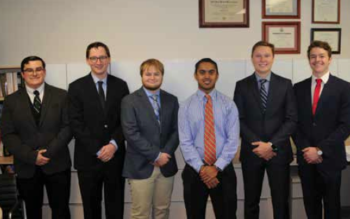
Marathon Petroleum Corporation: Horizontal Directional Drilling
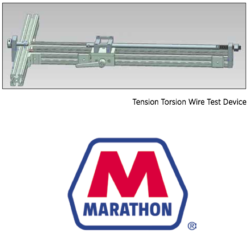
Marathon Petroleum Corporation (MPLX) is a largescale, geographically-diversified, and highly- integrated refining, marketing, and midstream company. MPLX is the nation’s largest refiner, with a crude oil refining capacity of more than 3 million barrels per calendar day in its 16-refinery system. In 2012 MPC formed MPLX LP, a master limited partnership involved in the transportation, storage, and distribution of crude oil and refined petroleum products through a marine fleet and approximately 10,000 miles of crude oil and light product pipelines. Headquartered in Findlay, Ohio, MPLX’s assets consist of a network of crude oil and products pipelines and supporting assets in the Midwest and Gulf Coast regions of the United States.
Horizontal directional drilling (HDD) is a trenchless pipeline and utility installation method that significantly reduces surface construction impacts and is often used for river and highway crossings. During drilling operations, a wire connection is used for communication to the bottom hole assembly. This wire can become damaged during drilling operations, causing delays and increases in project cost. Our team created a more reliable wire connection to help ensure that communication between the down hole instrumentation and the surface controller is not lost. In addition, the team created a testing device and procedure to test the control design and potential prototypes. Fatigue testing was performed for both wire tension and torsion to help MPLX predict and prevent failure of the wire under operating conditions.

